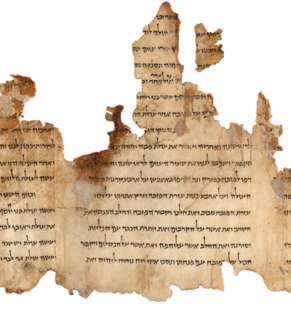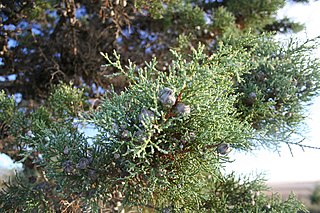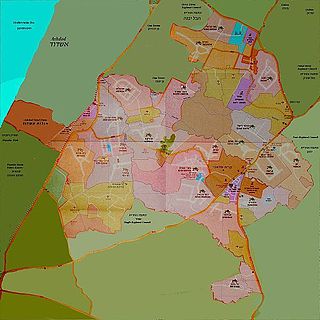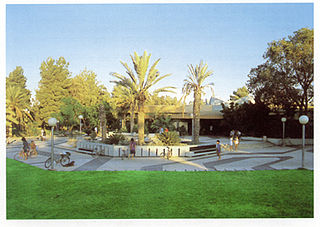This article needs additional citations for verification .(July 2011) (Learn how and when to remove this template message) |
The Moshavei Yahdav (Hebrew : מושבי יחדיו, lit. the Together Moshavim) is a group of three moshavim located in the north-western Negev desert between Netivot and Ofakim and under the jurisdiction of Bnei Shimon Regional Council. They are:

Hebrew is a Northwest Semitic language native to Israel; the modern version of which is spoken by over 9 million people worldwide. Historically, it is regarded as the language of the Israelites and their ancestors, although the language was not referred to by the name Hebrew in the Tanakh. The earliest examples of written Paleo-Hebrew date from the 10th century BCE. Hebrew belongs to the West Semitic branch of the Afroasiatic language family. Hebrew is the only living Canaanite language left, and the only truly successful example of a revived dead language.

Moshav is a type of Israeli town or settlement, in particular a type of cooperative agricultural community of individual farms pioneered by the Labour Zionists during the second wave of aliyah. A resident or a member of a moshav can be called a "moshavnik".

The Negev is a desert and semidesert region of southern Israel. The region's largest city and administrative capital is Beersheba, in the north. At its southern end is the Gulf of Aqaba and the resort city of Eilat. It contains several development towns, including Dimona, Arad and Mitzpe Ramon, as well as a number of small Bedouin cities, including Rahat and Tel as-Sabi and Lakyah. There are also several kibbutzim, including Revivim and Sde Boker; the latter became the home of Israel's first Prime Minister, David Ben-Gurion, after his retirement from politics.

Brosh is a moshav in southern Israel. Located in the north-western Negev between Ofakim and Netivot, it falls under the jurisdiction of Bnei Shimon Regional Council. In 2017 it had a population of 483.

Cypress is a common name for various coniferous trees or shrubs of northern temperate regions that belong to the family Cupressaceae. The word cypress is derived from Old French cipres, which was imported from Latin cypressus, the latinisation of the Greek κυπάρισσος (kyparissos).

Ta'ashur is a moshav in southern Israel. Located in the north-western Negev between Ofakim and Netivot, it falls under the jurisdiction of Bnei Shimon Regional Council and covers an area of around 1,200 dunams. In 2017 it had a population of 429.
The three moshavim were all established in 1953 by Moroccan immigrants and refugees who were members of the Bnei Moshavim movement. They are all named after a passage from the Book of Isaiah, specifically Isaiah 41:19:

Morocco, officially the Kingdom of Morocco, is a country located in the Maghreb region of North West Africa with an area of 710,850 km2 (274,460 sq mi). Its capital is Rabat, the largest city Casablanca. It overlooks the Mediterranean Sea to the north and the Atlantic Ocean to the west. Morocco claims the areas of Ceuta, Melilla and Peñón de Vélez de la Gomera, all of them under Spanish jurisdiction.

The Jewish exodus from Arab and Muslim countries, or Jewish exodus from Arab countries, was the departure, flight, expulsion, evacuation and migration of 850,000 Jews, primarily of Sephardi and Mizrahi background, from Arab and Muslim countries, mainly from 1948 to the early 1970s. The last major migration wave took place from Iran in 1979–80, as a consequence of the Islamic Revolution.

The Book of Isaiah is the first of the Latter Prophets in the Hebrew Bible and the first of the Major Prophets in the Christian Old Testament. It is identified by a superscription as the words of the 8th-century BCE prophet Isaiah ben Amoz, but there is extensive evidence that much of it was composed during the Babylonian captivity and later. Bernhard Duhm originated the view, held as a consensus through most of the 20th century, that the book comprises three separate collections of oracles: Proto-Isaiah, containing the words of Isaiah; Deutero-Isaiah, the work of an anonymous 6th-century BCE author writing during the Exile; and Trito-Isaiah, composed after the return from Exile. While virtually no scholars today attribute the entire book, or even most of it, to one person, the book's essential unity has become a focus in more recent research. Isaiah 1–33 promises judgment and restoration for Judah, Jerusalem and the nations, and chapters 34–66 presume that judgment has been pronounced and restoration follows soon. It can thus be read as an extended meditation on the destiny of Jerusalem into and after the Exile.
I will plant in the wilderness the cedar, the acacia-tree, and the myrtle, and the oil-tree; I will set in the desert the cypress, the plane-tree, and the larch together; [1]
As the end, the passage describes the three trees set in the desert "together", from which the group takes its name.












